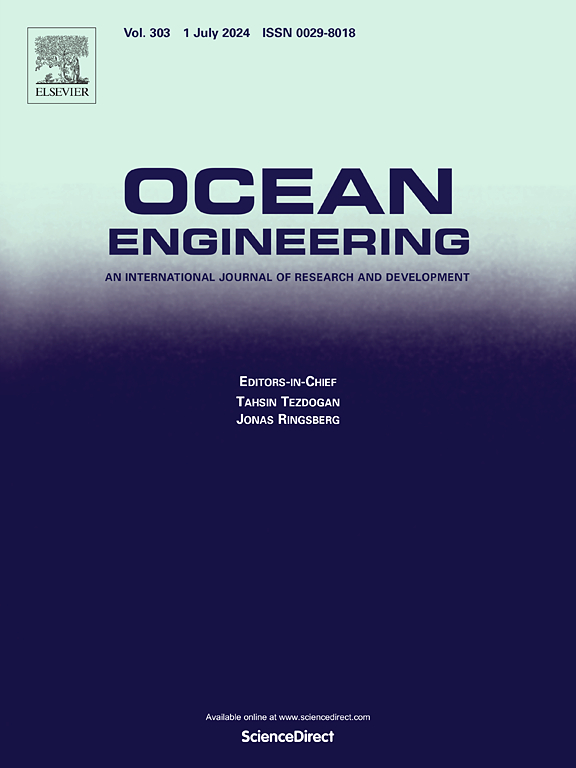深海透明载人舱的关键细节设计
IF 5.5
2区 工程技术
Q1 ENGINEERING, CIVIL
引用次数: 0
摘要
透明聚甲基丙烯酸甲酯(PMMA)舱室可为海上作业提供优越的观测能力。然而,基于经验方法的传统设计标准不足以解决pmma -金属渗透连接界面变形协调的挑战。本文对影响变形协调和结构可靠度的关键设计参数进行了研究。对设计深度为1000 m的基准球形PMMA座舱进行了分析,重点研究了不同设计条件下的界面变形协调,包括垫片存在、垫片厚度角度变化(2.5°-6°)和摩擦系数变化(0.10-0.30)。结果表明,尼龙垫片的加入显著提高了PMMA舱室与金属穿透体之间的变形相容性,使峰值最大主应力降低了约11.6%,并在重复深海循环后显著降低了界面损伤积累。将垫片的厚度角从2.5°增加到6°,进一步提高了变形均匀性,降低了近9.6%的应力集中,减少了约43%的累积疲劳损伤。此外,保持小于0.15的界面摩擦系数可以促进界面的微滑移,从而通过防止严重的剪切应力局部化来显著减轻疲劳损伤。本研究通过有针对性的界面设计确定变形协调的优先级。本文章由计算机程序翻译,如有差异,请以英文原文为准。
Critical details design for a deep-sea transparent manned cabin
Transparent polymethyl methacrylate (PMMA) cabins can provide superior observation capabilities for marine operations. However, conventional design standards, rooted in empirical methods inadequately address the challenges of interface deformation coordination at PMMA-metal penetration connections. This study undertakes an investigation into the critical design parameters that influence deformation coordination and structural reliability. A benchmark spherical PMMA cabin designed for 1000 m depth was analyzed, focusing explicitly on interface deformation coordination under varying design conditions, including gasket presence, gasket thickness angle variations (2.5°–6°), and friction coefficient variations (0.10–0.30). Results demonstrate that the incorporation of a nylon gasket significantly enhances the deformation compatibility between the PMMA cabin and metal penetrations, resulting in a reduction of peak maximum principal stresses approximately by 11.6 % and leading to a substantial decrease in interface damage accumulation following repeated deep-sea cycles. Increasing the thickness angle of the gasket from 2.5° to 6° further enhances deformation uniformity, reduces stress concentrations by nearly 9.6 %, and decreases cumulative fatigue damage by approximately 43 %. Furthermore, maintaining interface friction coefficients of less than 0.15 has been shown to facilitate microslip at the interface, thereby significantly mitigating fatigue damage by preventing severe shear stress localization. This study establishes that prioritizing deformation coordination through targeted interface design.
求助全文
通过发布文献求助,成功后即可免费获取论文全文。
去求助
来源期刊

Ocean Engineering
工程技术-工程:大洋
CiteScore
7.30
自引率
34.00%
发文量
2379
审稿时长
8.1 months
期刊介绍:
Ocean Engineering provides a medium for the publication of original research and development work in the field of ocean engineering. Ocean Engineering seeks papers in the following topics.
 求助内容:
求助内容: 应助结果提醒方式:
应助结果提醒方式:


